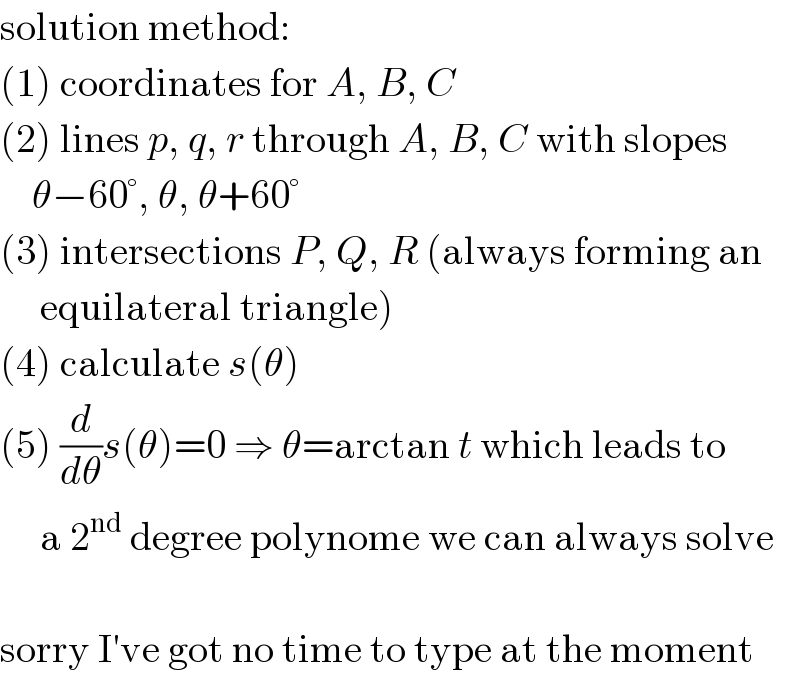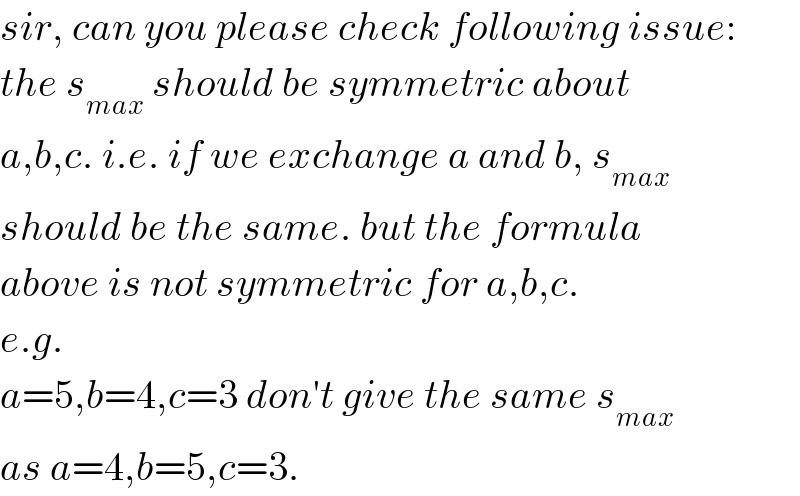
Question and Answers Forum
Question Number 56289 by mr W last updated on 13/Mar/19

Commented by mr W last updated on 13/Mar/19

Commented by ajfour last updated on 13/Mar/19

Commented by MJS last updated on 13/Mar/19

Commented by mr W last updated on 14/Mar/19

Commented by ajfour last updated on 14/Mar/19

Commented by mr W last updated on 15/Mar/19

Commented by ajfour last updated on 15/Mar/19

Answered by mr W last updated on 13/Mar/19

